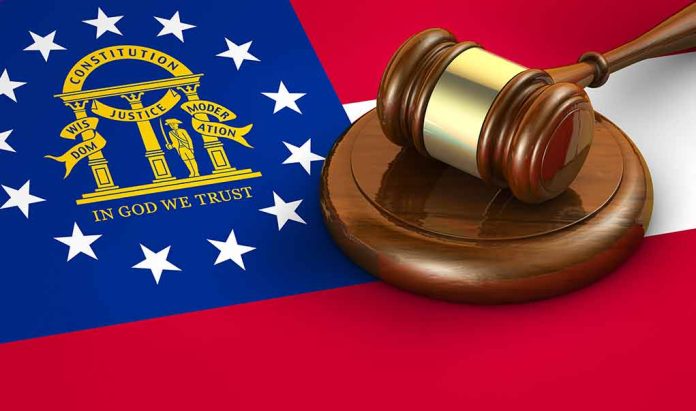
Justice Gorsuch slams Supreme Court’s “grave mistake” in refusing to protect sacred Apache religious site, leaving Oak Flat vulnerable to destruction by mining interests.
Key Takeaways
- The Supreme Court declined to hear a case involving the transfer of Oak Flat, a sacred Apache site, to Resolution Copper mining company
- Justice Neil Gorsuch issued a strong dissent, comparing the potential destruction of Oak Flat to demolishing a historic cathedral
- The decision allows the federal government to proceed with transferring land considered essential to Apache religious practices
- The case highlights the ongoing tension between Indigenous religious rights and federal land management policies
- Apache Stronghold advocates vow to continue fighting despite this significant legal setback
Supreme Court Declines Key Religious Liberty Case
In a decision that has alarmed religious liberty advocates, the Supreme Court has declined to review a case concerning Oak Flat, a site sacred to Western Apache tribes that is set to be transferred to Resolution Copper for mining operations. The Court’s refusal to hear the case effectively greenlights the land transfer despite fervent objections from Native American groups who have used the area for religious ceremonies for generations. The case, brought by Apache Stronghold, a coalition of Apaches and other advocates, sought to prevent the transfer under the Religious Freedom Restoration Act (RFRA), arguing that mining would destroy their ability to practice their faith.
The Ninth Circuit Court previously ruled that the land transfer did not impose a “substantial burden” on religious exercise, a finding that conservative Justice Neil Gorsuch vehemently disputed in his dissent. The Supreme Court’s decision not to intervene occurs against a backdrop of increasing scrutiny regarding the federal government’s treatment of Indigenous sacred sites and the balance between economic development and religious liberty protections. This case marks a significant setback for Native American groups seeking to protect their ancestral lands from development.
Conservative Justices Criticize Court’s Decision
Justice Neil Gorsuch, joined by Justice Clarence Thomas, issued a scathing dissent to the Court’s decision not to hear the case, characterizing it as a serious error with far-reaching implications for religious liberty. Gorsuch’s dissent emphasized that the case met all the standard criteria for Supreme Court review, including doubtful legal reasoning in the lower court decision, a split with other federal appeals courts on similar issues, and the vital importance of the subject matter. The conservative justice’s criticism underscores growing concerns about consistent application of religious liberty protections.
“Respectfully, that is a grave mistake. This case meets every one of the standards we usually apply when assessing petitions for certiorari: The decision below is highly doubtful as a matter of law, it takes a view of the law at odds with those expressed by other federal courts of appeals, and it is vitally important,” according to Justice Neil Gorsuch, Associate Justice of the Supreme Court
Gorsuch drew a powerful comparison between Oak Flat and more familiar religious sites, suggesting that Americans would never accept the destruction of a historic cathedral for commercial purposes. His dissent challenges the apparent double standard in how Indigenous religious practices are treated compared to more mainstream faiths. The justice’s opinion signals that at least some members of the Court recognize the inconsistency in how religious liberty protections are applied when it comes to Native American spiritual practices tied to specific lands.
Impact on Indigenous Religious Rights
The Court’s decision not to hear the Oak Flat case has alarming implications for the protection of Indigenous religious rights across America. By allowing the Ninth Circuit’s ruling to stand, the Supreme Court has effectively narrowed the interpretation of what constitutes a “substantial burden” under RFRA when it comes to Native American religious practices. This creates a concerning precedent that could affect numerous other sacred sites currently under threat from development, resource extraction, or other government actions across the country.
“Before allowing the government to destroy the Apaches’ sacred site, this Court should at least have troubled itself to hear their case,” stated by Justice Neil Gorsuch, Associate Justice of the Supreme Court
Despite this significant legal setback, Apache Stronghold and its supporters remain steadfast in their commitment to protecting Oak Flat. Wendsler Nosie Sr., a former San Carlos Apache tribal chairman and founder of Apache Stronghold, has emphasized that their fight will continue through all available legal and political channels. The group’s determination reflects the profound spiritual and cultural significance of Oak Flat to the Apache people, who have conducted religious ceremonies at the site for countless generations and view its protection as essential to their cultural survival.
Continued Fight for Sacred Land
With the Supreme Court declining to intervene, the federal government now has the legal clearance to proceed with transferring Oak Flat to Resolution Copper, a joint venture owned by Rio Tinto and BHP Billiton. The mining operation plans to use block cave mining, which would create a crater approximately 1,000 feet deep and nearly two miles wide, effectively destroying the sacred site. This devastating outcome looms unless new legal challenges or legislative actions can halt the transfer and subsequent mining activities.
“We will never stop fighting—nothing will deter us from protecting Oak Flat from destruction.” – Wendsler Nosie Sr., former San Carlos Apache tribal chairman and founder of Apache Stronghold
The Oak Flat controversy highlights a troubling pattern in how the federal government balances economic interests against religious liberty when Native American sacred sites are involved. Critics argue that the government’s willingness to sacrifice Apache religious practices for copper mining represents a failure to equally protect all religious traditions under the law. The case serves as a stark reminder of the ongoing challenges faced by Indigenous communities fighting to preserve their cultural heritage and religious practices in the face of economic development and resource extraction priorities.



